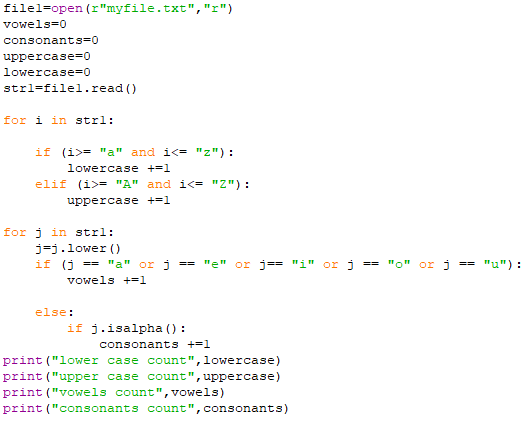
- PYTHON FIND FILE IN DIRECTORY HOW TO
- PYTHON FIND FILE IN DIRECTORY FULL
- PYTHON FIND FILE IN DIRECTORY CODE
It reads in CMakeLists.txt, and generate a csv file with the targets. Suppose we are now in TREE directory, then the output should look like this: Listing files in directories recursively?
PYTHON FIND FILE IN DIRECTORY FULL
To get a full path (which begins with top) to a file or directory in dirpath, do os.path.join(dirpath, name).Īs a preview, we get the following output from the tree like this:įor root,d_names,f_names in os.walk(path):įname = Īs another example, we're going to use the tree below:įor dirpath, dirs, files in os.walk("."): Note that the names in the lists contain no path components. The filenames is a list of the names of the non-directory files in dirpath. The dirnames is a list of the names of the subdirectories in dirpath (excluding '.' and '.'). The dirpath is a string for the path to the directory.

The os.walk() generate the file names in a directory tree by walking the tree either top-down or bottom-up.įor each directory in the tree rooted at directory top, it yields a 3-tuple: (dirpath, dirnames, filenames)
PYTHON FIND FILE IN DIRECTORY CODE
Note: If you need file attribute information along with the count, using the scandir() instead of listdir() can significantly increase code performance because os.DirEntry objects expose this information if the operating system provides it when scanning a directory.

The scandir() function of an os module returns an iterator of os.DirEntry objects corresponding to the entries in the directory. Output: file count: 4 scandir() to count all files in the directory

import osįor root_dir, cur_dir, files in os.walk(r'E:\account'): The ‘account’ folder on my system contains three files and one subdirectory containing one file.
PYTHON FIND FILE IN DIRECTORY HOW TO
Let’s see how to use the os.walk() to count files present in a directory and its subdirectories. The first list contains files, and the second list includes directories. For each directory in the tree rooted at the directory top (including top itself), it yields a 3-tuple (dirpath, dirnames, filenames).įor example, calling the os.walk('path') will yield two lists for each directory it visits. The os.walk() Generate the file names in a directory tree by walking the tree either top-down or bottom-up. In such cases, we need to use the recursive function to iterate each directory recursively to count files present in it until no further sub-directories are available from the specified directory. Sometimes we need to count files present in subdirectories too. Print(len()) Count all files in the directory and its subdirectories import osĭir_path = r'E:\demos\files_demos\account' If os.path.isfile(os.path.join(dir_path, path)):Ī compact version of the above code using a list comprehension. Let’s see how to print the count of files. The ‘account’ folder present on my system has three files. If it is a file, increment the counter by 1.Įxample: Count Number Files in a directory

In each loop iteration, use the os.path.isfile('path') function to check whether the current entry is a file or directory. Use isfile() function and increment counter by 1.Using for loop we will iterate each entry returned by the listdir() function. Use for loop to Iterate the entries returned by the listdir() function. The os.listdir('path') function returns a list of files and directories present in the given directory. This counter variable contains how many files are present in a directory. Using the os module, we can perform many file-related operations such as moving, copying, renaming, and deleting files. The os module provides many functions for interacting with the operating system. Getting a count of files of a directory is easy as pie! Use the listdir() and isfile() functions of an os module to count the number of files of a directory.


 0 kommentar(er)
0 kommentar(er)
